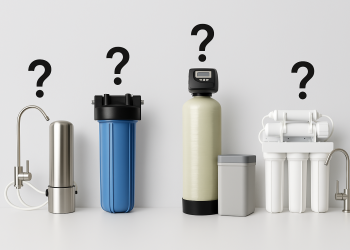Table of Contents
As if finding a job isn’t hard enough, ensuring that your resumé stands out from a pool of hundreds of applicants is another obstacle. Essentially, the lists of educational attainment, relevant skills, and work history are the deciding factors for landing a job — assuming your resumé sticks out long enough to get picked up by an HR staff.

Now, it’s no secret that resumé templates make it 10 times easier to get started with your resumé. But, there are key elements in how to make a resumé that will give you an edge over the other applicants. The elements that will transform a standard bland resumé into a flavorful one are listed below. Read on!
1. Design with your audience in mind.
In this instance, your “audience” is the slew of hiring and recruitment personnel who will receive your resumé. While the minimal design is the unspoken rule, how you put together your resumé relies heavily on the industry you want to make a career out of. A minimalist design is an appropriate template for the financial or legal sector, but the same guideline cannot apply when trying to get noticed in the creative industry.
It’s a head-scratcher deciding which resumé design can amplify your qualifications and skills in a specific industry, and the web is saturated with websites that offer the “best” templates. A crowd favorite is cloud-based Venngage offering various design solutions for a diverse niche and visual presentation needs. The convenient part is the organization in browsing through premade templates and the ease in customizing it to fit the industry and vacancy you are vying for.
2. Impress with your header.
The header is the very first element on your resumé, so it’s only natural that it will be the first to be read by the HR team as well. First impressions last, and in this case, the first impression only takes seconds and is the deciding factor if your audience will keep on reading.
Your header says a lot about you as an individual without taking into consideration your qualifications. While brevity is crucial, ensuring that critical information about yourself is complete in the header is much more vital. So make sure your header has all these elements:
- Your professional headshot in an appropriate outfit
- Job title or career path
- Brief elevator pitch
- Bulleted expertise
- Contact details
3. Choose active verbs that make an impact.
Talk is cheap, but in sending out any resumé, all we really have are words. So make sure you use words that have value. Active verbs create a much more substantial impact than adjectives, especially when highlighting what you can do for the organization.
For example, “strategic thinker” is often used on resumés, but it is such a generalized term that doesn’t convey the relevance to the hiring manager. Instead, use power words like “conceptualized”, “developed”, or “launched”, followed by the specifics of the contribution you made that resulted in a beneficial impact on the organization.
4. Adapt format around industry standards.
Nowadays, everything seems to be automated, and that includes screening resumés. Some organizations utilize a software aptly called Applicant Tracking System (ATS). It quickly scans resumés and filters out applications that are deemed unfit for the position. On the other hand, it zeroes in on specific keywords that identify candidates as a “good match,” from skills to educational attainment.
Then, it gets passed on to an HR personnel; a human being doesn’t even read the majority of the resumés that get rejected. This is why it pays to craft the words on your resumés carefully. While not all organizations or businesses use ATS, it’s safer to build your resumés based on the assumption that they do.
5. Include sample works.
Especially if applying for a creative position (writing, design, marketing, etc.), adding a few of your sample works is another way to gain an advantage over the other applicants. While it’s encouraged to not include documents in sending applications, there’s a loophole in getting your sample works into your resumé.
A portfolio is handy, so it’s worth creating one if you don’t have one yet. It also makes it easier to showcase your sample works through one. Your sample works (if you don’t have a portfolio yet) should be kept on a cloud, like Google Drive. This way, you can hyperlink the access to your best sample works through an anchor text within your resumé without attaching additional documents on top of your resumé.
Once you have those five essential elements incorporated in your application, the rest should be a breeze. It’s helpful to note, though, that your resumé has to be adjusted based on the position and industry you are applying for. It’s the same principle that we discussed in our how-to #1. Say, marketing in hospitality is different from marketing for warehouses. While the title is the same, the scope will differ. So don’t include skills or accomplishments that are irrelevant to the industry or vacancy.
Job applications are nerve-wracking but don’t feel like you need to overcompensate the content of your resumé by piling up unrelated skills and information. Instead, hone in on the above-needed elements and work your way in nailing your resumé.









